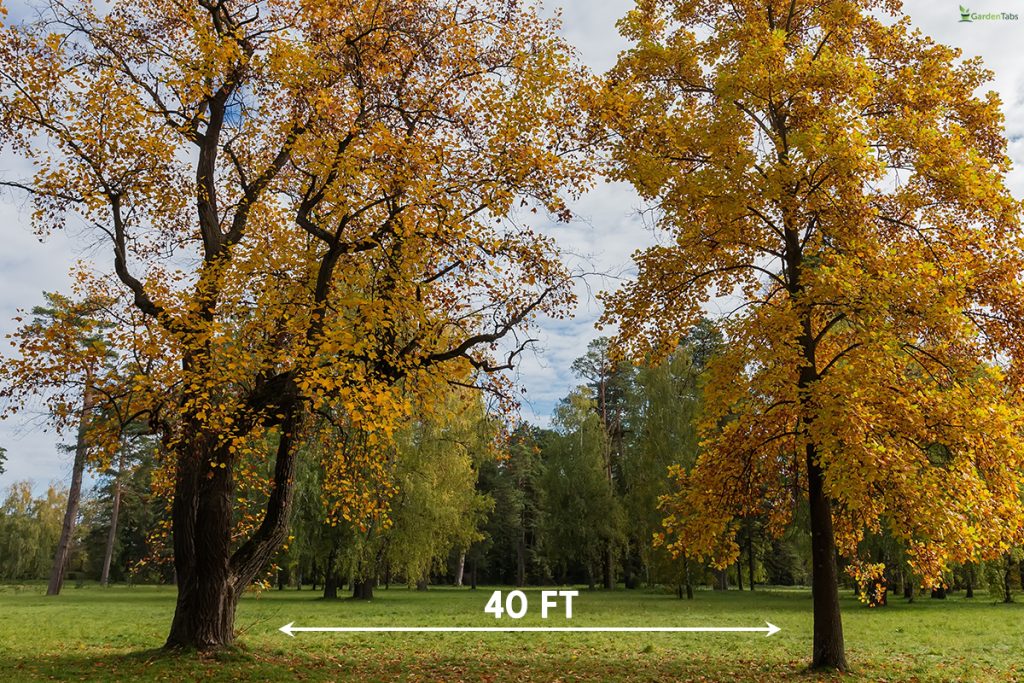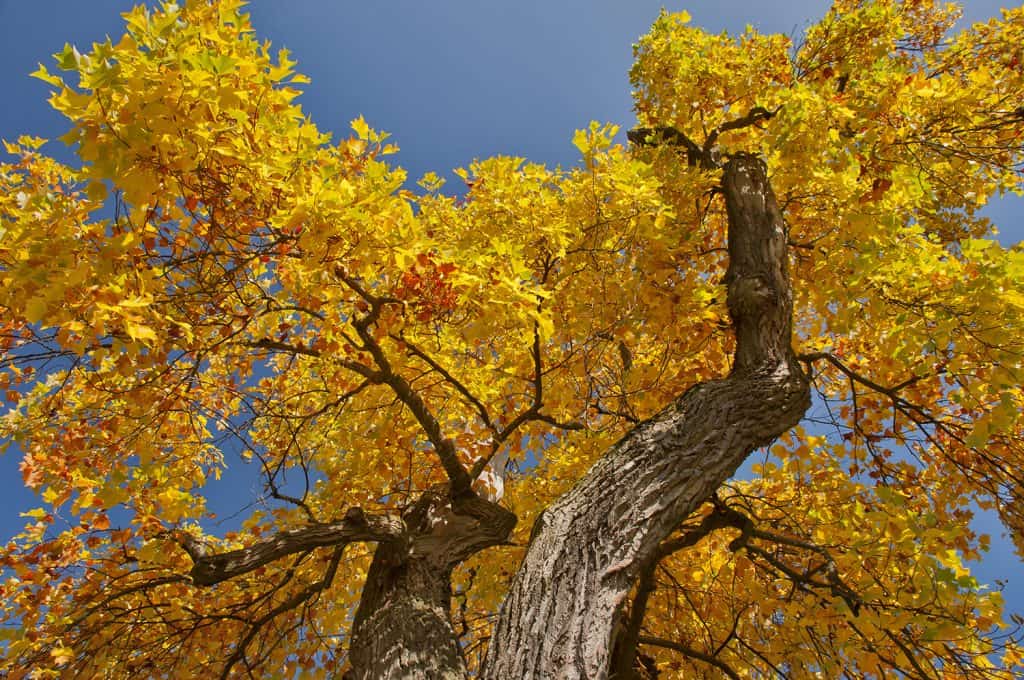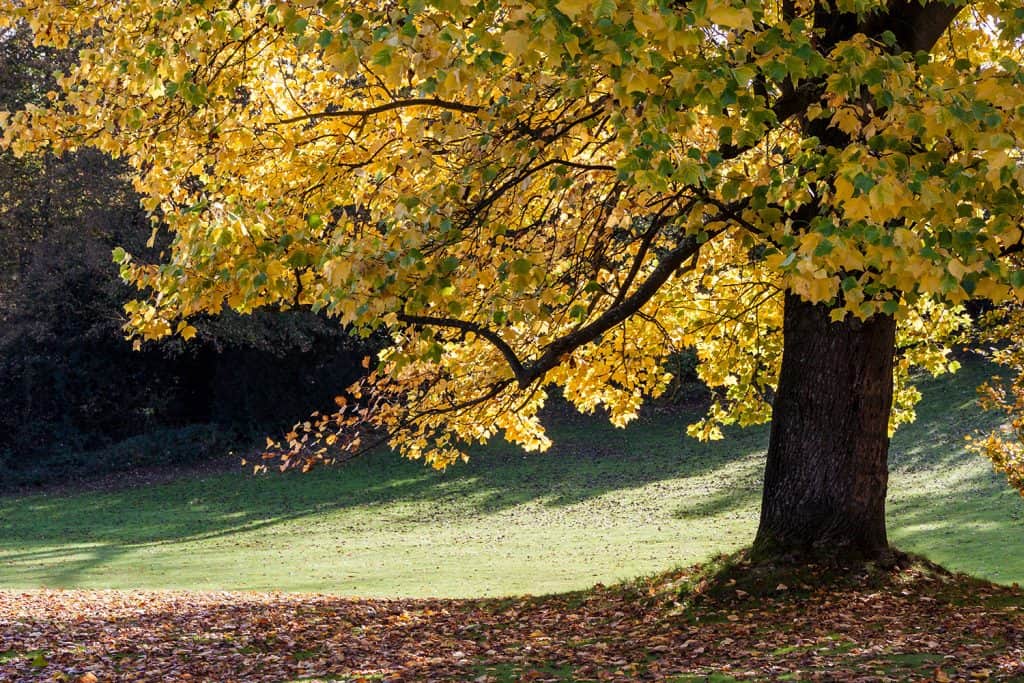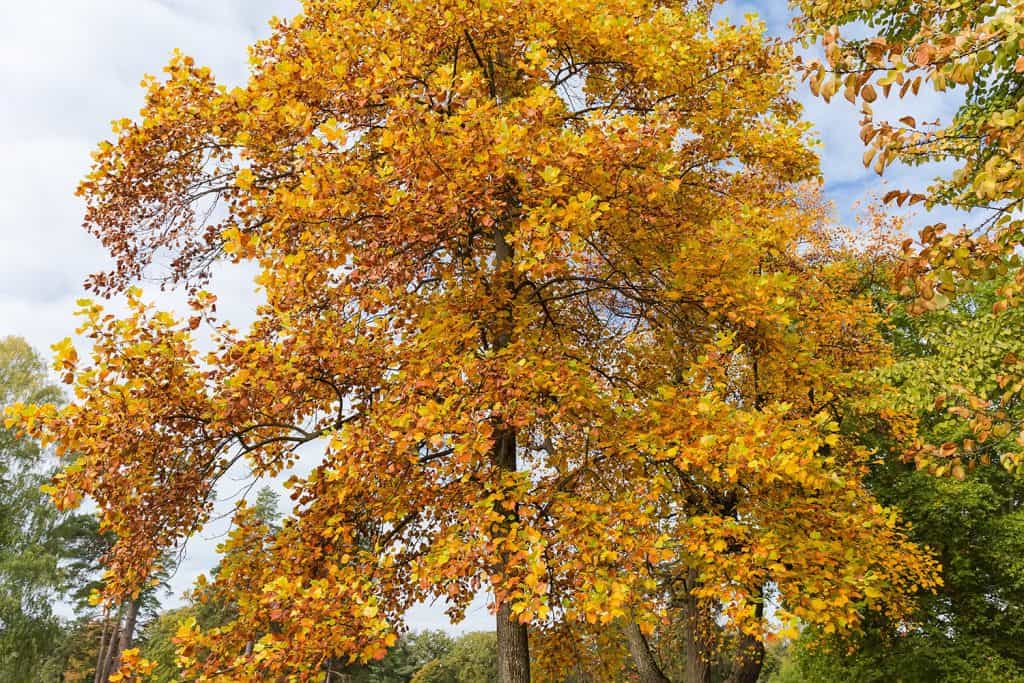You might be planning to plant tulip trees in your yard and wonder how much space you should allow between them. Don't worry because we have done the research to provide you with everything you need to know about allocating space between your tulip trees.
Leave at least 40 feet of space between tulip trees. Dwarf tulip trees that can only reach 15 feet in dripline circumference need less than 40 feet of space.
Tulip trees have yellow or yellow-greenish flowers that resemble tulips. Tulip trees can grow large and take up space in your yard. Continue reading as we discuss all the other essential details you will need when planting and caring for tulip trees.

How Much Space Should I Leave Between Tulip Trees?
A tulip tree, also known as a tulip poplar or yellow poplar, is a large tree with a big trunk and canopy. Despite the names, the common tulip tree is not related to the tulip or the poplar tree. Instead, it is part of the magnolia family.
When planted in their most suitable environment, fully matured tulip trees can grow 90 to 130 feet in height, while their canopies can expand up to 30 to 60 feet in circumference.

Tulip trees also have a strong root system that can extend deep and wide, depending on the tree's size when matured.
It is common for a tree root system to expand further than the reach of its canopy. Tulip trees have the same disposition. The root system of a fully matured tulip tree will mirror the aboveground part of the tree, reaching a depth of 100 feet and a width of 30 feet.
Because of this, the ideal space to be left in between tulip trees should be at least 40 feet. This will give enough space for the root of the trees to expand naturally.
For the dwarf variety of tulip trees, you can allot a smaller growing space. The space you should leave between each plant will depend on the habits of the variety.
How Much Space Should I Leave For A Single Tulip Tree?

Leaving 40 feet of area for a tulip tree does not only concern the situation of planting multiple trees. You should leave 40 feet for the root growth, regardless of whether you will plant multiple tulip trees or a tulip near another tree of a different species.
Leave 40 feet of space for the tree even if you will only plant one. This means that the tulip tree should be at least 40 feet away from any infrastructure, like your house, power lines, or roads. This will ensure that the root system does not damage them.
In addition, the bark of a tulip tree is soft and the branches can easily break during extreme weather conditions. Situating the tree at a safe distance will reduce the chances of accidents and injury during rain or winter storms.
What Is The Average Height Of A Tulip Tree?

There are two existing species of tulip trees: Liriodendron tulipifera and Liriodendron chinense.
Liriodendron tulipifera is native to North America with a couple of existing varieties, as well as a dwarf variety. Liriodendron chinense is native to North Asian counties and similar to the North American tulip trees.
The average height of each variety is different. Below is a list of tulip tree species and varieties and their average heights.
Tulip Trees (Liriodendron Tulipifera And Liriodendron Chinense)
Both species of tulip trees have a similar habits. Both trees can reach 90 to 130 feet in height and 30 to 60 feet in width.
Liriodendron Tulipifera 'Fastigiatum'
A variety of tulipifera, a fastigiatum tulip tree can grow 50 to 60 feet in height and 15 feet in canopy circumference. However, this variety of tulip tree is known to also reach a height of 100 feet in the wild.
Liriodendron Tulipifera ‘Aureomarginata’
This variety of tulipifera can grow up to 22 feet in height and 13 feet in width.
Liriodendron Tulipifera 'Ardis' (Dwarf Tulip Tree)
The dwarf variety of tulipifera, this variety of tulip trees can still reach a height of 40 to 60 feet. The circumference of this tulip tree variety can grow to an average of 20 to 30 feet.
Liriodendron Tulipifera 'Little Volunteer'
The Little Volunteer tulip tree has smaller leaves than its counterparts. This variety of tulip tree is ideal for home gardens, growing an average of 30 to 35 feet in height and 18 to 20 feet in width.
How Do I Plant A Tulip Tree?

You can buy a young tulip tree from a plant nursery where plants are grown with root balls for easier transplanting.
Tulip trees can also be grown from seed by natural pollinators or human intervention. However, tulip tree seeds are rare and not commonly available for sale.
Replanting tulip tree saplings bought from a plant nursery is the most common method of growing a tulip tree. The best time to plant a tulip tree sapling is during the spring, or after the last frost.
Below is a simple guide you can follow for planting a young tulip tree.
Water The Roots
Young tulip trees are sensitive to dehydration. When replanting a tulip tree sapling, make sure to keep it hydrated while the soil is being prepared. You can do this by sitting the plant near any constant water source like an operating garden hose or sprinkler.
You can also choose keep the root ball soaked in a container of clean water while the soil is being prepared. This method will allow the tulip tree's root ball to absorb as much moisture as it needs before being buried under the soil.
Prepare The Soil
Ideally, you should already have an area prepared for the tulip tree before purchasing a sapling. A wide, open space with moist but well-draining soil is the best spot for a tulip tree. The large space is to accommodate the expected size of the mature tulip tree.
Once the tulip tree sapling is set near a source of water, locate the sunniest space in the area and begin preparing the soil. Choose a location where the tree can receive partial or full sun.
Avoid planting a tulip tree under shady areas of your garden as it may cause the foliage to brown.
Refer to the size of your tulip tree's root ball when preparing the soil. Rototill an area that is five times the width of your root ball. Rototilling is a method of plowing the land to make digging easier for the gardener and root growth easier for the young plant.
Dig A Hole
Once the area is rototilled, dig a hole that is two to three times the width of the root ball. For the depth of the hole, make sure to dig just enough so that the root collar will stay above ground when the sapling is planted.
Do not sow the soil where the tulip tree will be standing, and allow the corners of the hole to slope down. You should end up with a saucer-shaped hole in the soil where you will plant the tree.
Tulip trees are hardy plants that can grow in clay loam or sandy loam as long as the moisture is retained but not water-saturated. You can add compost to your soil to enhance its richness and friability. Mix the compost well into the soil.
Plant The Tree
After preparing the soil and digging a hole, proceed to place the tulip tree directly in the middle of the hole. During the transportation of the plant, make sure to give enough support to the bottom of the root ball to avoid detaching it from the trunk.
When the tulip tree is placed in the hole, remove the burlap or other material that was used to hold the root ball. Make sure to remove any other foreign material attached to the plant, such as rope, twine, or nails.
Refill The Hole
While keeping the tulip tree sapling upright, put the original soil back around the root ball. Make sure to fill up the hole until the soil has reached just below the collar of the root.
Water And Mulch
Once the hole is filled up, proceed to water the plant generously. Wait for the soil to soak up the water and then apply mulch at least two inches thick around the refilled soil.
Make sure that the mulch is around four inches away from the trunk of the tree. This will prevent water saturation around the growing roots. Allowing the root to be exposed to too much moisture can lead to decay and root rot, which is not good for any plant.
To Wrap Up

Tulip trees can grow a very large root system when fully matured. Because of this, it is ideal to leave sufficient space between the tree and any other tree or infrastructure. You should leave at least 40 feet of space around a tulip tree.
In this article, we discussed the average amount of space you should leave in between tulip trees. We also discussed how big tulip tree varieties can grow, as well as how you can plant one in your garden. Make sure to leave enough space in between each tulip tree you plant.
Made it to the end? Check out some of our related posts!





